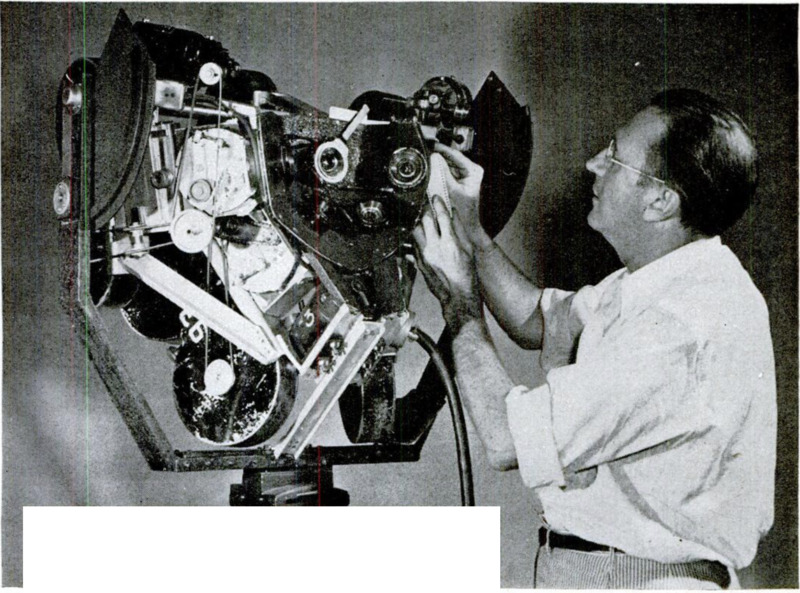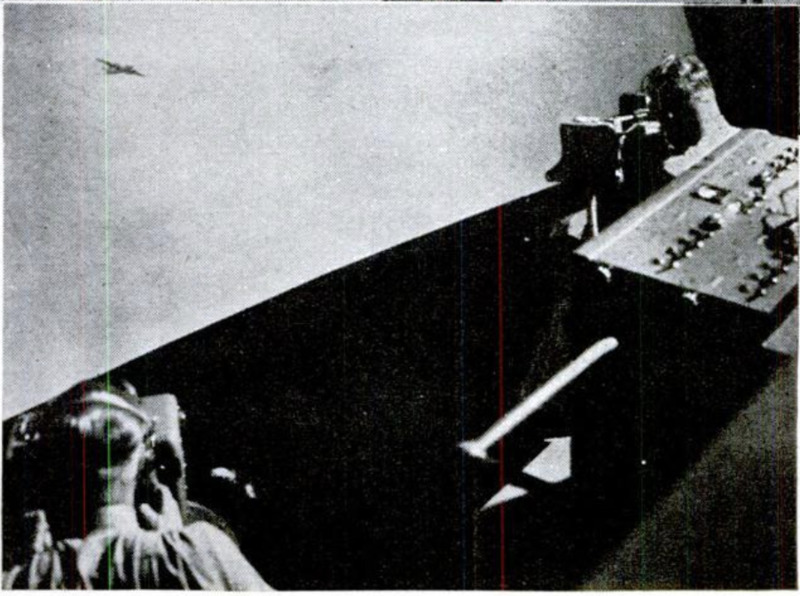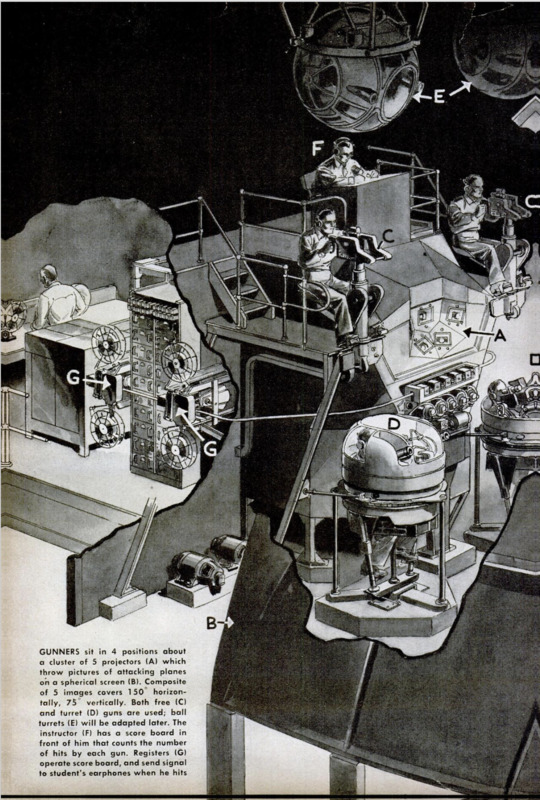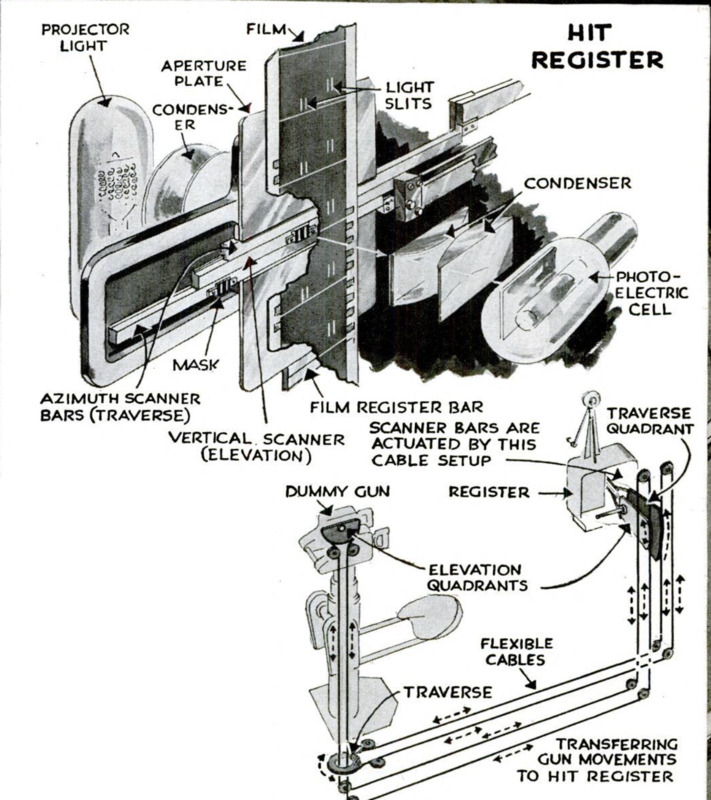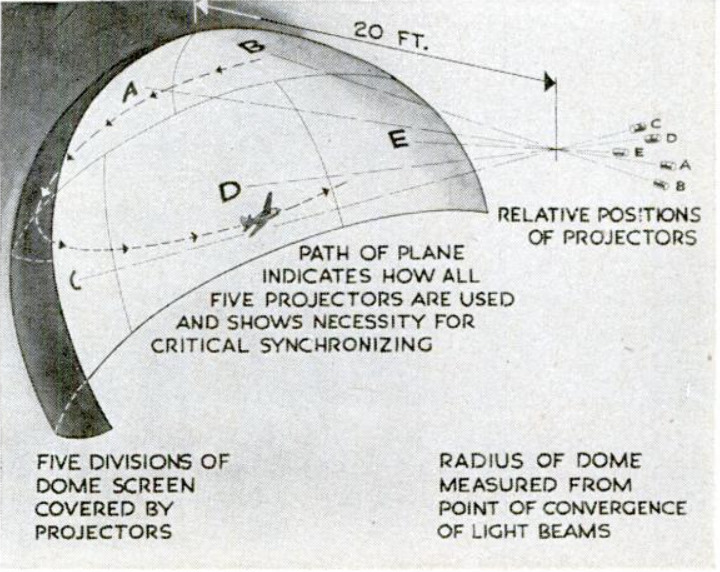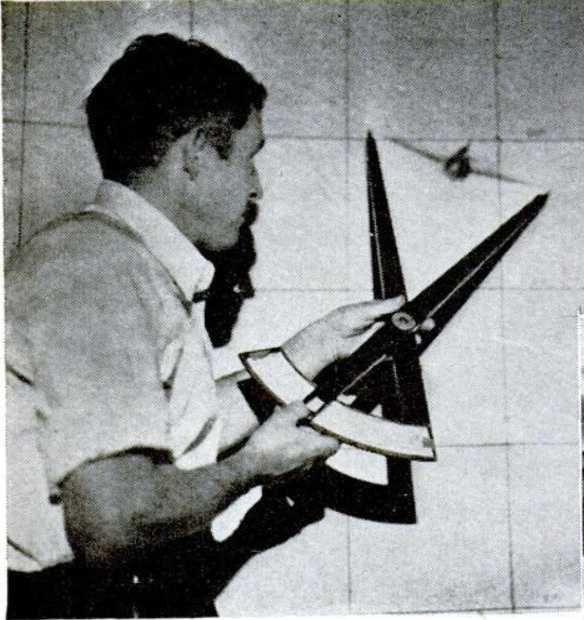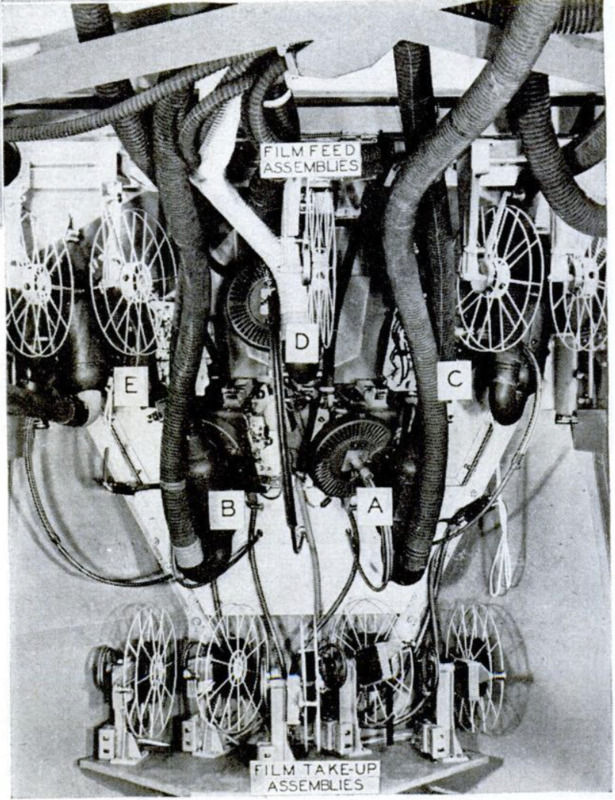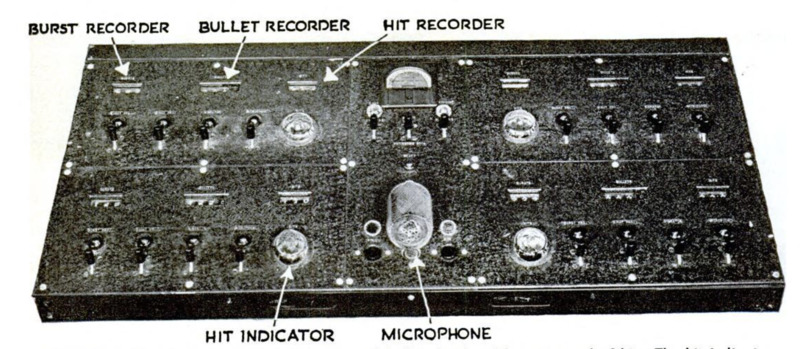Movies Train Air Gunners
Contenuto
-
Titolo
-
Movies Train Air Gunners
-
Article Title and/or Image Caption
-
Movies Train Air Gunners. Flyers Blast Phantom Planes in Battle Practice
-
extracted text
-
TO BRIDGE the jump between shooting at slow-moving sleeve targets towed in a straight line and shooting “live ducks,” aerial gunners now are getting their final licks on the Waller Gunnery Trainer. Developed by Fred Waller, who formerly was in charge of special effects for Paramount Pictures and more recently head of their
short-subjects division, the Trainer reproduces, on a mammoth concave movie screen, attacks by dodging, twisting fighter planes, and shows the gunners how to hit them. The screen is a segment of a sphere, measuring 40 feet from end to end. On this is thrown a picture by five projectors, each covering a separate portion of it. Twenty feet in front of the screen sit the trainees, each in one of four gun positions. They have two gun handles in front of them, just like those on a real .50 caliber machine gun. When the image is thrown on the screen, they can see the wing tips of their own bomber, as well as the approaching fighter. They lead it in their standard Mark 9 reflector sights, pulling the trigger when they think they are on the correct “point of aim.” If they are in a free-gun position, instead of a turret position, the gun handles start jumping, the vibrations carefully reproduced to simulate those of a real gun. Through earphones they can hear the authentic sound of their own guns. When a hit is scored, it sounds a 1,000-cycle “beep” in their ears and moves a register on the instructor's control panel. The Army Air Forces also use the Waller Trainer.
-
Autore secondario
-
William Crist (writer)
-
B. G. Seielstad (illustrator)
-
Lingua
-
eng
-
Data di rilascio
-
1943-09
-
pagine
-
65-70
-
Diritti
-
Public Domain (Google Digitized)
-
Archived by
-
Matteo Ridolfi
-
Marco Bortolami (editor)
